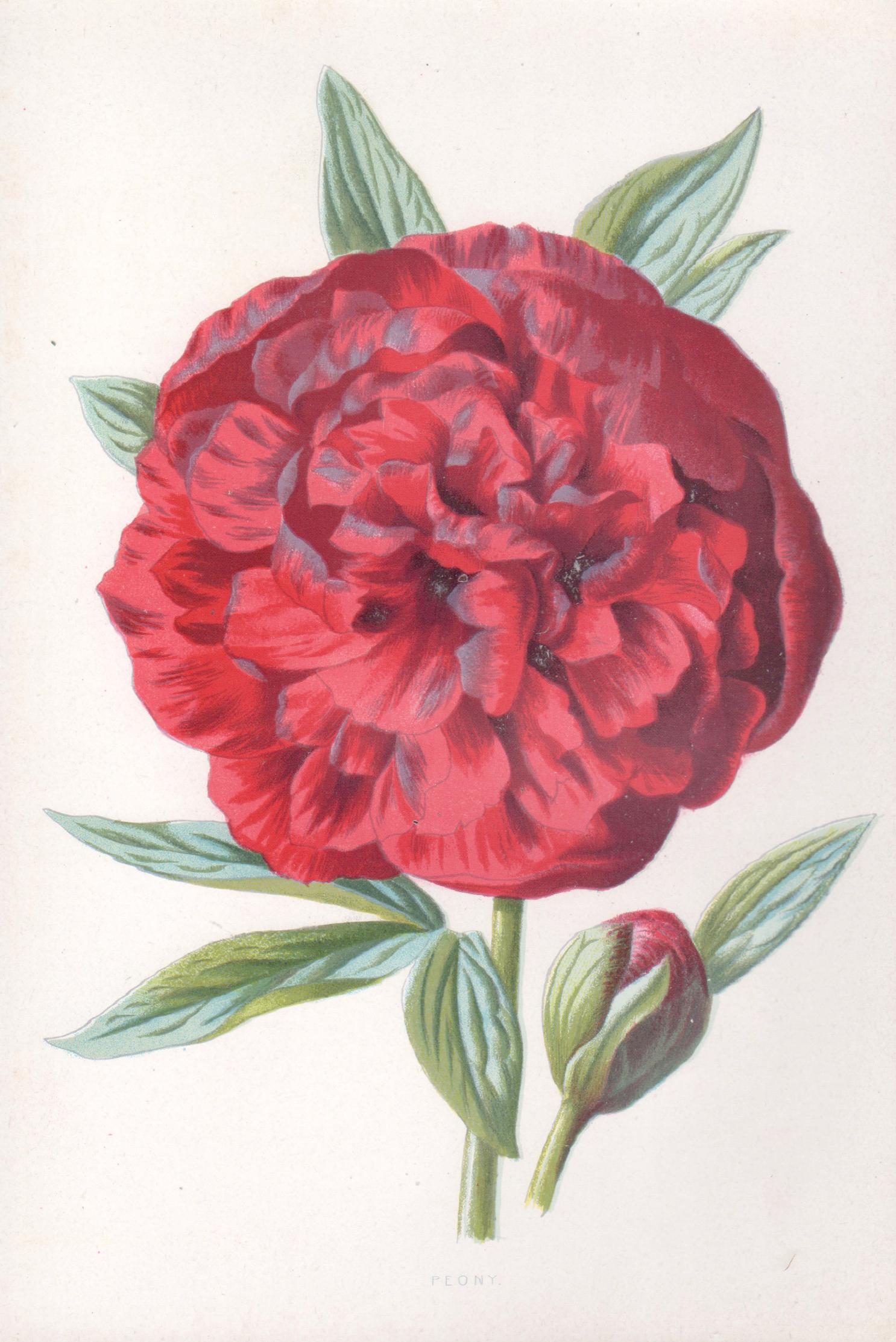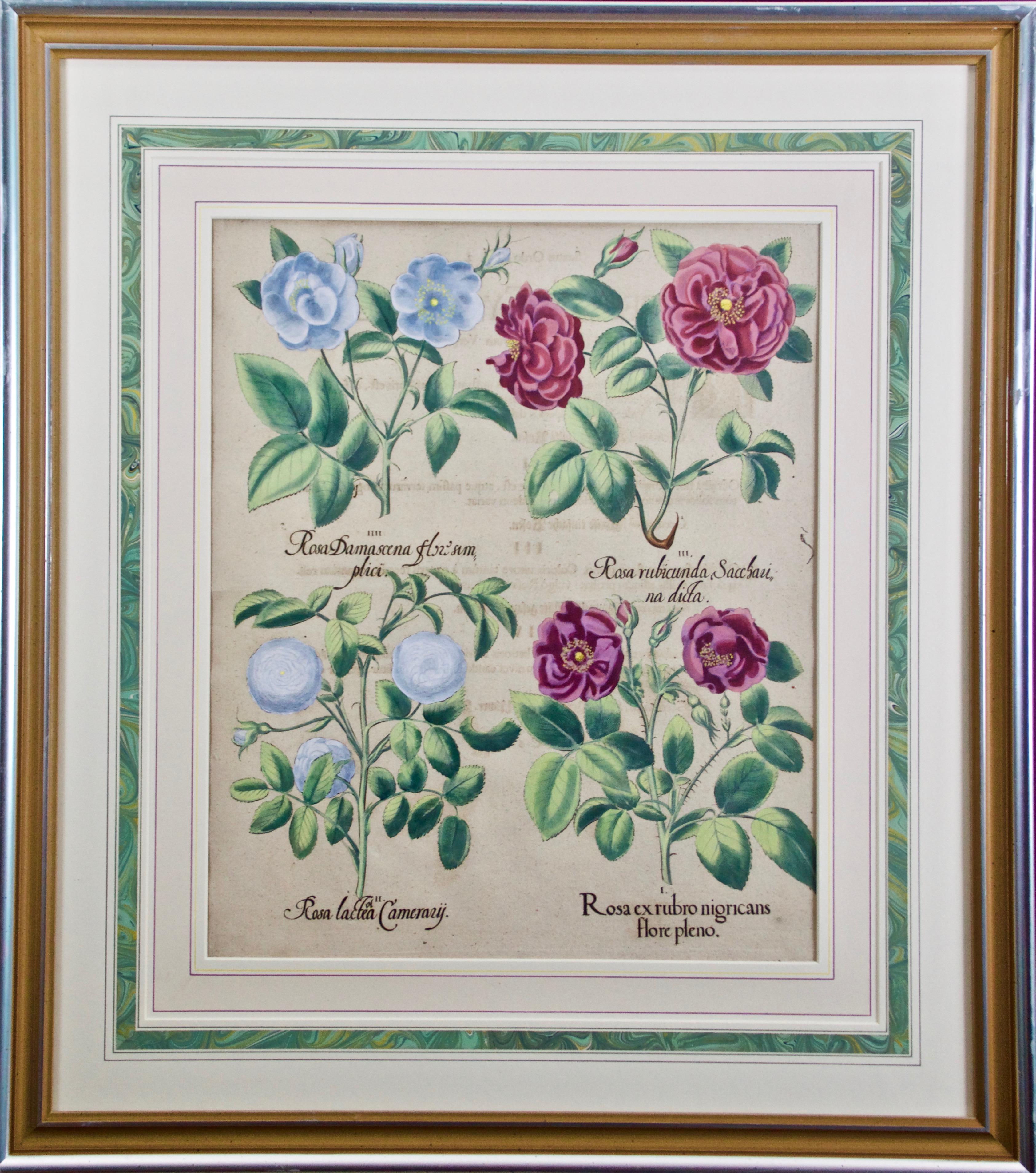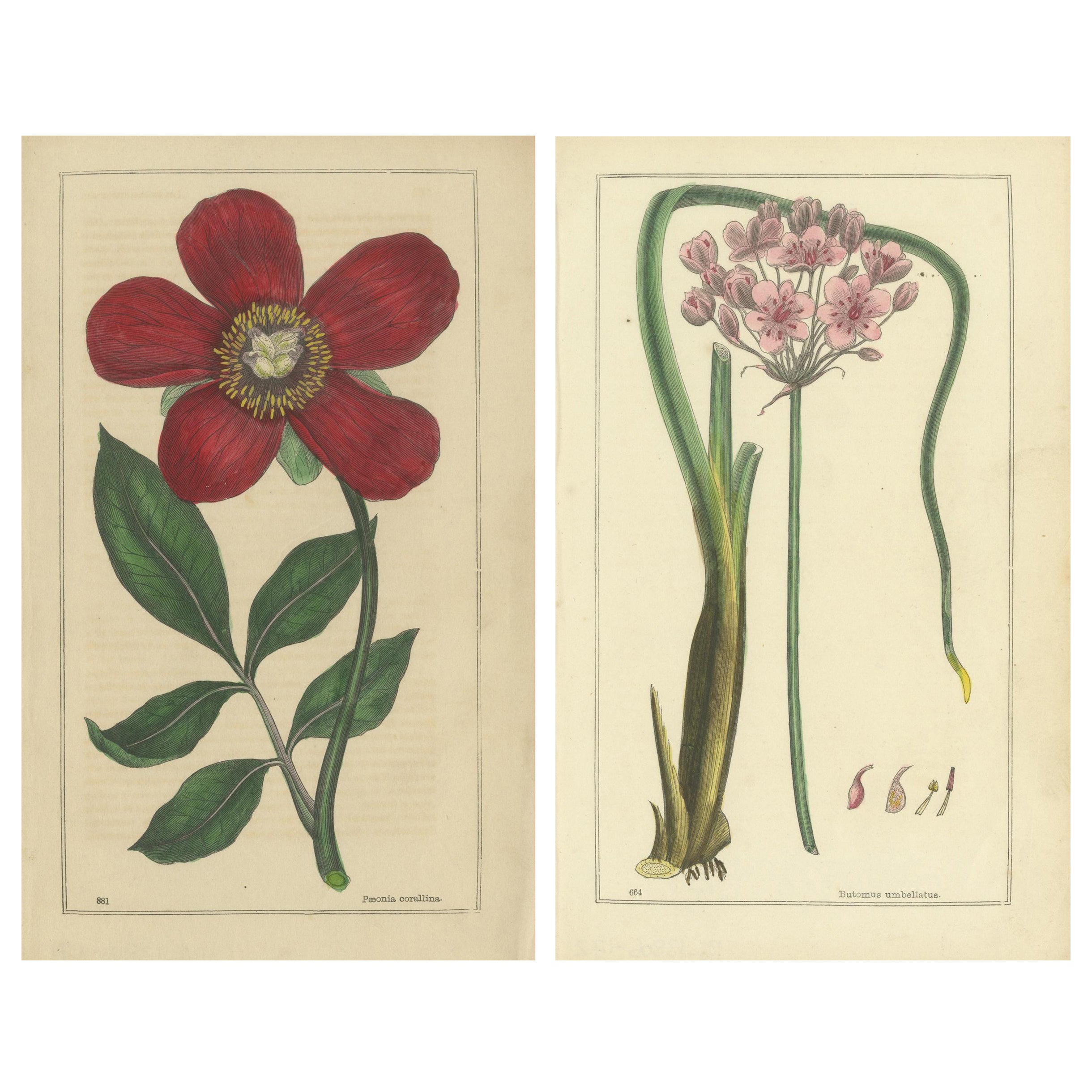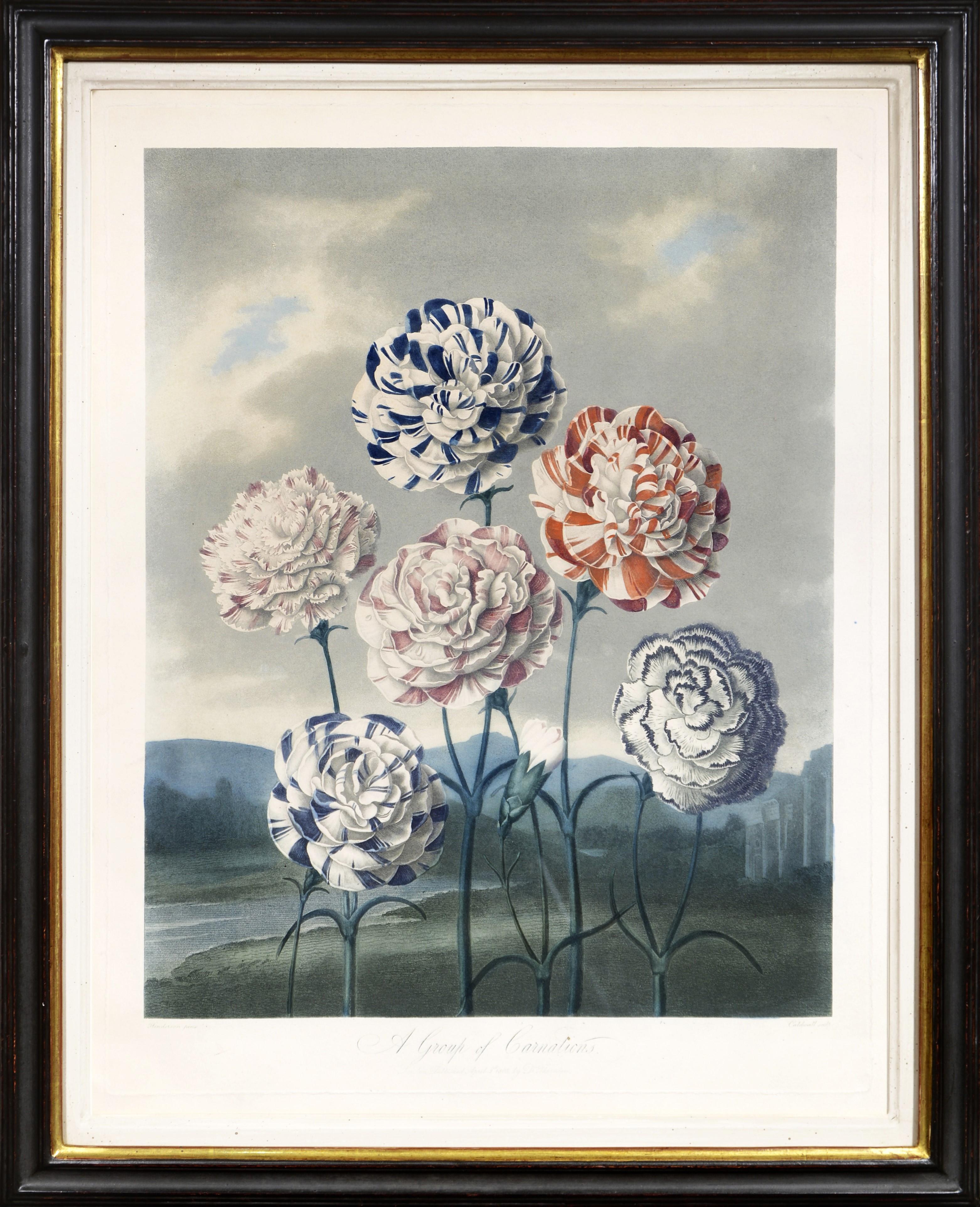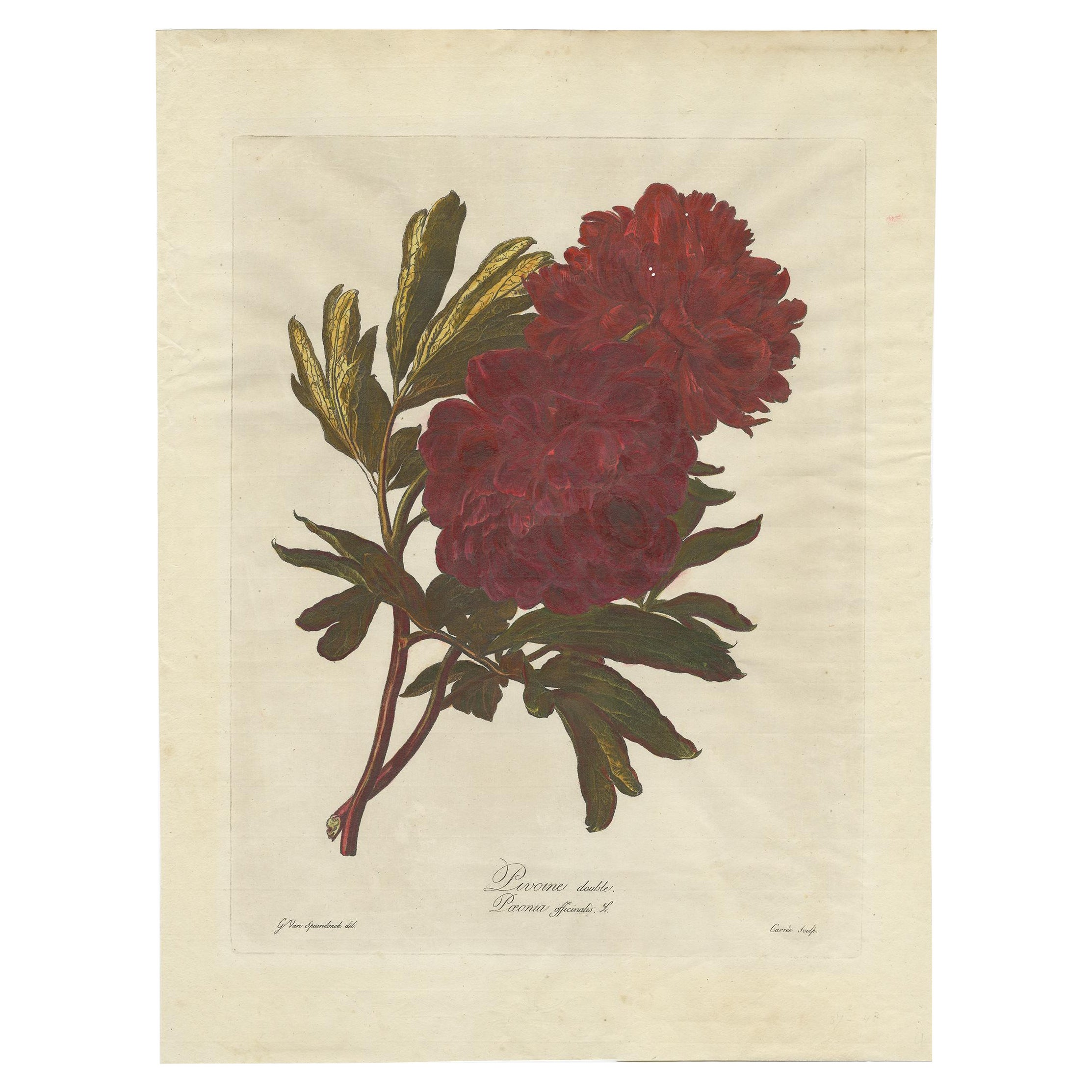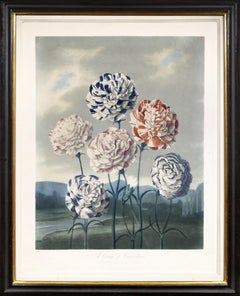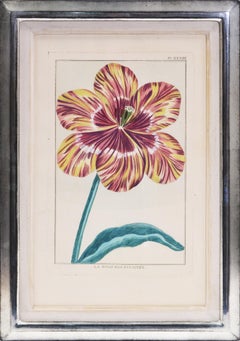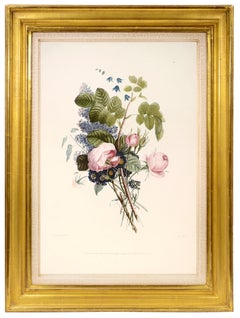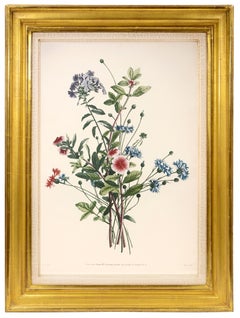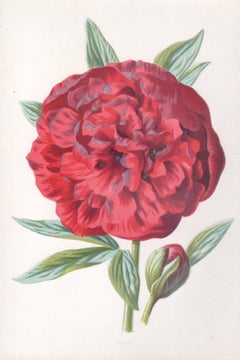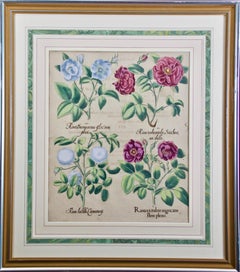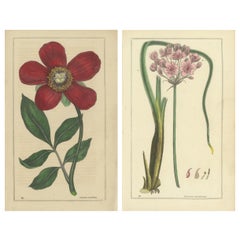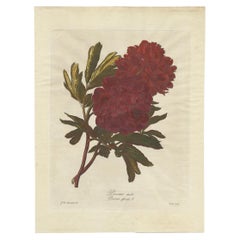Items Similar to BESLER. A Group of Four Peonies.
Want more images or videos?
Request additional images or videos from the seller
1 of 8
Basilius BeslerBESLER. A Group of Four Peonies.1640
1640
$20,665.82
£15,000
€17,517.09
CA$28,613.27
A$31,238.84
CHF 16,377.25
MX$379,407.77
NOK 204,525.15
SEK 193,126.28
DKK 130,746.43
About the Item
Four magnificent copper engraved plates with hand-colour from "Hortus Eystettensis", one of the earliest and most famous works in the field.
[Nuremberg and Eichstatt, 1640].
The Hortus Eystettensis is a pictorial record of the flowers grown in the greatest German garden of its time, that of Prince Bishop of Eichstatt, Johann Conrad von Gemmingen.
The garden was begun by Joachim Camerarius in 1596 and, after his death in 1598, completed by Basil Besler, a pharmacist from Nuremberg. A visitor, Philipp Hainhofer, in 1611 marvelled at the eight gardens, each containing 'flowers from a different country; they varied in the beds and flowers, especially in the beautiful roses, lilies, tulips.'
The Hortus records this variety and beauty. The book is exceptional in every sense; in its variety and range of flowers, in its size, in its fine quality of engraving. It is also one of the earliest records of flowers from a specific, documented garden.
Besler was asked to complete the work by Gemmingen in 1606; the huge nature of the task was clear to Besler and he enlisted the help of his younger brother Hieronymus and Ludwig Jungermann, a nephew of Camerarius.
Printing the Hortus may have begun as early as 1607. Drawings were made in situ and from specimens sent by the Bishop to Nuremberg; the Bishop reported to Hainhofer that he had boxes of fresh flowers sent every week to Besler at Nuremberg for sketching. A team of at least 10 engravers were employed to translate the drawings to copperplates.
The gardens, along with most of the town of Eichstatt, were destroyed by the invading Swedish troops under Herzog Bernhard von Weimar in 1633-4, although they were partially restored by later bishops. Many of the original drawings survive in the University Library, Erlangen.
- Creator:Basilius Besler
- Creation Year:1640
- Dimensions:Height: 23.75 in (60.3 cm)Width: 20.16 in (51.2 cm)
- Medium:
- Movement & Style:
- Period:1640-1649
- Condition:Framed and Glazed in handmade silver frames. Overall dimensions: 51.2 x 60.3 cm.
- Gallery Location:London, GB
- Reference Number:Seller: 968021stDibs: LU141926766592
About the Seller
5.0
Vetted Professional Seller
Every seller passes strict standards for authenticity and reliability
Established in 1979
1stDibs seller since 2020
19 sales on 1stDibs
- ShippingRetrieving quote...Shipping from: London, United Kingdom
- Return Policy
Authenticity Guarantee
In the unlikely event there’s an issue with an item’s authenticity, contact us within 1 year for a full refund. DetailsMoney-Back Guarantee
If your item is not as described, is damaged in transit, or does not arrive, contact us within 7 days for a full refund. Details24-Hour Cancellation
You have a 24-hour grace period in which to reconsider your purchase, with no questions asked.Vetted Professional Sellers
Our world-class sellers must adhere to strict standards for service and quality, maintaining the integrity of our listings.Price-Match Guarantee
If you find that a seller listed the same item for a lower price elsewhere, we’ll match it.Trusted Global Delivery
Our best-in-class carrier network provides specialized shipping options worldwide, including custom delivery.More From This Seller
View AllTHORNTON. Group of Carnations
By Dr. Robert John Thornton
Located in London, GB
Magnificent print by Robert John Thornton; aquatint and mezzotint, printed in colour and finished by hand, heightened with gum arabic, from The Temple of Flora.
[London 1799]
First state.
Thornton was a prolific medical author and became a Doctor of Medicine at St Andrews University and licentiate of the Royal College of Physicians. However, he is best remembered for this great botanical publication The Temple of Flora, which formed a part of the larger work - New Illustration of the sexual system of Linnaeus.
In 1797, he also began advertising for subscribers to his planned natural history publishing venture, which eventually comprised of 30 folio botanical plates. For these remarkable illustrations, he engaged the services of the leading artists and engravers of his day: Sir William Beechey, James Opie, Henry Raeburn, John Russell, Philip Reinagle...
Category
1790s Naturalistic Still-life Prints
Materials
Mezzotint, Aquatint, Handmade Paper, Engraving
BUCHOZ. A Group of Four Tulips
Located in London, GB
A Group of 4 hand-coloured engraved plates of tulips, in matching silver leaf frames. Dimensions: 34.6cm by 48.5cm.
A fine group of these rare flower plates, the complete volume of 40 being part of Le Jardin d'Eden, which was intended as the supplement to the Collection des Fleurs de la Chine & de l'Europe, first published in 1776.
[Paris 1781]
The second half of the eighteenth century saw a boom in natural history publications in France fuelled by such works as Buffon’s Histoire Naturelle. The accession of Louis XVI in 1774 was followed by a relaxation in the regulation of the book trade making it easier for authors to publish their own works. No other writer was to take such copious advantage of these two developments as Pierre-Joseph Buchoz (1731-1807), a French physician, lawyer and naturalist. His works are characterised by the beauty of the illustrations, and their rarity owing to the small size of the print runs.
The final tulip plate...
Category
1780s Naturalistic Still-life Prints
Materials
Engraving, Paper
PRÉVOST. Print from Collection des Fleurs et des Fruits
By Jean Louis Prévost
Located in London, GB
Original stipple engraving by Charles-Louis Ruotte, printed in colour and finished by hand.
[Paris, 1805]
Prévost came from a long line of French artists spanning 400 years. Jean-...
Category
Early 1800s Naturalistic Still-life Prints
Materials
Color, Engraving, Handmade Paper
PRÉVOST. Print from Collection des Fleurs et des Fruits
By Jean Louis Prévost
Located in London, GB
Original stipple engraving by Charles-Louis Ruotte, printed in colour and finished by hand.
[Paris, 1805]
Prevost's "Collection des Fleurs et Fruits...
Category
Early 1800s Naturalistic Still-life Prints
Materials
Color, Engraving, Handmade Paper
PRÉVOST. Print from Collection des Fleurs et des Fruits
By Jean Louis Prévost
Located in London, GB
Original stipple engraving by Charles-Louis Ruotte, printed in colour and finished by hand. Framed and glazed, overall size: 63.3 by 47.2 cm.
[Paris 1805].
Prevost came from a lo...
Category
Early 1800s Naturalistic Still-life Prints
Materials
Color, Engraving, Handmade Paper
THORNTON. The Tulips.
By Dr. Robert John Thornton
Located in London, GB
Aquatint and mezzotint, printed in colours and finished by hand, heightened with gum arabic, from The Temple of Flora. Framed and glazed.
London, 1...
Category
1790s Naturalistic Still-life Prints
Materials
Mezzotint, Aquatint, Handmade Paper, Engraving
You May Also Like
Peony, English antique red flower botanical chromolithograph, 1895
By Frederick William Hulme
Located in Melbourne, Victoria
'Peony'
Process print from Frederick William Hulme’s ‘Familiar Wild Flowers’, circa 1890.
Hulme was known as a teacher and an amateur botanist. He was the Professor of Freehand and...
Category
Late 19th Century Naturalistic Still-life Prints
Materials
Lithograph
Red Roses: A Framed 17th C. Hand-colored Botanical Engraving by Basilius Besler
Located in Alamo, CA
"Rosa ex rubro nigricans" (Red Roses); a hand-colored copper engraving from Basilius Besler's landmark work, Hortus Eystettensis (Garden at Eichstatt), first published in 1613 in Eichstatt, Germany near Nuremberg and later in 1640 and 1713.
This engraving is presented in a glossy silver and matte gold-colored wood frame with a green edge and an elaborate double cream-colored French mats with light mauve bands; each accented by a broad decorative marbleized green band. It is glazed with plexiglass. There is text offset and a very small crease in the left margin, but the print is otherwise in excellent condition. Provenance: W. Graham Arader Gallery...
Category
17th Century Old Masters Landscape Prints
Materials
Engraving
1871 Botanical Prints of Paeonia and Butomus from Tunbridge Wells Flora
Located in Langweer, NL
1871 Botanical Prints of Paeonia and Butomus from Tunbridge Wells Flora
Offered here is a striking pair of original 19th-century botanical prints from The Flowering Plants of Tunbridge Wells and Neighbourhood by Richard Deakin, published in 1871 by Stidolph & Bellamy and Groombridge & Sons, London. These finely detailed plates depict Paeonia corallina (Coral Peony) and Butomus umbellatus (Flowering Rush), two elegant flowering species native to parts of Europe and found in the Tunbridge Wells region of England.
Rendered with scientific precision and colored by hand, these prints reflect the Victorian era’s passion for botany, natural classification, and the visual arts. Each flower is represented in its full structural form, with careful attention to botanical accuracy, showing stems, leaves, blossoms, and reproductive parts where applicable.
The *Paeonia corallina* features deep crimson petals and vibrant green foliage, while the *Butomus umbellatus* is notable for its light pink clustered blooms atop tall, sinuous stems—its root and bulb details meticulously illustrated alongside. These prints exemplify the dual nature of botanical works of the 19th century: simultaneously scientific documents and refined decorative art.
These plates come from one of the more specialized and regionally focused British botanical publications of the period, making them relatively rare in the market. Their historic link to the Tunbridge Wells flora gives them additional geographic and academic interest.
Condition Report:
Good condition overall. Hand-coloring remains vivid and precise. The paper shows only minor, even toning, appropriate for its age. No significant foxing or tears. Species names are present and clearly legible.
Framing Suggestions:
For the best visual impact and preservation, these prints should be framed in matching frames with archival mats and UV-protective glass. A neutral mount (ivory or pale grey) will complement the organic colors while enhancing their Victorian charm. Ideal for hallways, libraries, studies, or conservatories, especially in botanical or period-themed interiors.
Keywords:
Victorian botanical prints...
Category
Antique 1870s Prints
Materials
Paper
Antique Botany Print of The Common Peony by Carrée, C.1800
Located in Langweer, NL
Antique botany print titled 'Pivoine double'. Hand-colored stipple engraving of a Paeonia officinalis, commonly known as the common peony. This colourful flowering plant is native to...
Category
Antique 19th Century Prints
Materials
Paper
$543 Sale Price
20% Off
Still Life with Peonies — Italian Succession
By Carlo Alberto Petrucci
Located in Myrtle Beach, SC
Carlo Alberto Petrucci, 'Still Life with Peonies', color monotype, c. 1915. Signed in pencil, in the image, lower right. A superb, painterly impression, with fresh colors, on heavy c...
Category
1910s Post-Impressionist Still-life Prints
Materials
Monotype
Peonies, June
By Susan Headley van Campen
Located in Bryn Mawr, PA
Titled lower left. Signed lower right: S. Headley Van Campen
Susan Van Campen’s plein-air oil paintings are painted with the confident brushwork of a...
Category
21st Century and Contemporary Realist Still-life Drawings and Watercolors
Materials
Watercolor
More Ways To Browse
Antique Copper Still
Santa Fe Bronze
Sculpture Cake
Sculpture Pop Art Candy
Smith Brothers
Spanish Woman Oil Paintings
Stick Bug
Tom Young
Used Blimps
Used Dog Sleds
Vampire Art
Vanguard Oil Paintings
Vintage Bed Sheets
Vintage Running Posters
William Morris Art
Wood Cube Sculpture
1880 Large Oil Paintings
Abstract Reclining Sculpture
